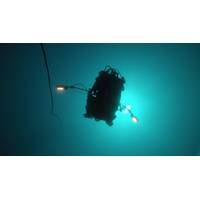
Voyis Discovery Camera Integrated with Deep Trekker REVOLUTION ROV
optimal positioning of attachments such as imaging sonar and grabbers, and it is capable of descending to depths of up to 305 meters. The ROV employs six powerful thrusters for precise control in both vertical and lateral movements. It is built with a carbon fiber shell, anodized aluminum, stainless steel body, and sapphire lens cover.Voyis' Discovery Cameras, enhanced by the Nova Mini Lights, capture 4K video with minimal latency while simultaneously generating high-resolution still images and IMU data. The resulting assets can be processed through edge computing to produce intricate 3D
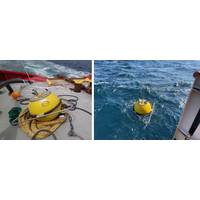
Navigational Hazard: Wave Buoy Breaks Free from Mooring at West of Orkney Wind Farm Site
the wave buoy is located at: 59° 26' 45.0"N 4° 17' 39.9" W – 07:30 UTC 11/04/2023," notice to mariners read on Wednesday.The unit that broke free is a Datawell Wave buoy measuring directional waves, temperature and current. It is yellow, weighs 250 kg, and its stainless steel hull is one meter in diameter with an aluminum triangle. OWPL, a consortium of TotalEnergies, Corio Generation, and RIDG, has been in contact with a vessel contractor who is currently preparing a vessel to perform both the recovery and re-deployment as soon as possible.The West of Orkney
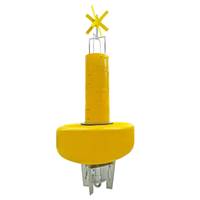
Almarin Updates Balizamar Buoy Range with Modular Design
the evolution of Balizamar buoys. The Balizamar EVO buoys go one step further: their structure is made up of rotomolded polyethylene modular components, enhancing visibility and lowering cost maintenance. The inner structure is made of galvanized steel by immersion and the top mark is constructed of stainless steel. The hull is rotomolded filled with closed-cell EPS foam to ensure buoyancy. “The design of the Balizamar buoys, which dates to 2010, has been updated to meet current needs. While an improvement in materials was made in 2013 with the change from GRP to stainless steel, the new EVO
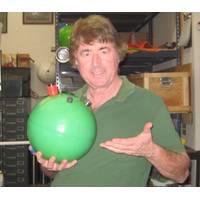
Lander Lab #5: Lithium Polymer Batteries
, non-rechargeable lithium cells. For one, lithium polymers use an intercalated lithium compound for their electrodes, not metallic lithium, and therefore are more stable. They are also not hazardous if exposed to water.Lithium-ion cells use a liquid electrolyte, and are encased in a cylindrical stainless-steel housing. The well-known 18650 cell is an example.Lithium-polymer (LiPo) cells use a gelled electrolyte and are vacuum sealed inside a soft plastic pouch. This is known as a “prismatic cell”. There are several LiPo chemistries, but the most common for prismatic
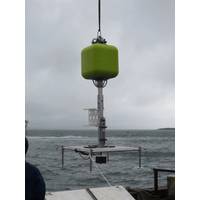
Lander Lab #4: Underwater Releases
water, that burnwire started. The scheme worked.Burnwires can be expensive, but lack of practice or training can be more so. Experience provides confidence and competence. A simple solution is to make “training burnwires”. These are a 12” length of jacketed stainless steel wire rope (JWR), one end stripped about 3/8” for electrical connection, the other end sealed with a layer of marine grade heat shrink, overhanging and pinched flat on the end to seal it. The center of a heavy steel hex nut, like a ¾-16 thread, is filled with 5-minute epoxy.
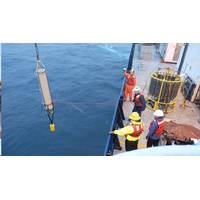
OSIL Debuts New Marine Snow Catcher
export processes of the oceanic organic carbon and nutrient cycles, and can help to predict how these processes may change in the future, as well as providing an insight into the extent of oceanic microplastics in the water column. OSIL said its range now includes samplers with the option of fully stainless steel settling volumes to help reduce the potential for cross contamination specifically for users wishing to study microplastics.The Marine Snow Catchers are large volume water samplers which possess separable top and bottom sections. These modular sections allow researchers to collect and characterize
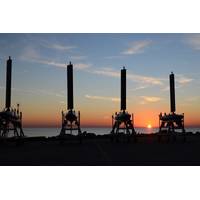
Autonomy: Sun, Sail & Subsea – Not a Holiday, but a Hybrid UxV Platform
Decker.They’ve also learned to simplify as much as they can. “We utilise a dual-element wing on the sail that had probably 20 feet of cable that wrapped around numerous pulley systems and when you start putting these out for long endurance missions, we would start to see these smaller stainless steel cables either bust or break at certain points,” explains Cousino. “So we focused on creating a ruggedized vehicle for long-endurance missions, where we went to a single element wing that has 77 fewer parts and tried to simplify the engineering as much as possible to allow for persistent
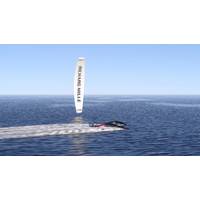
SP80: 80-knot Sailboat Demands High-Performance Sensing
and management, but also a holistic approach to electronic systems in order to provide the end-to-end connectivity solutions required for our sensing system.”During the design phase, sensors are used to improve and control the robustness of the high-performance materials (carbon, titan, stainless steel) of the boat’s structure. Thanks to the design of the super-ventilated foil, stability is optimized and the impact of cavitation – a phenomenon in which water starts boiling around foils at extreme velocities, slowing the boat down – is avoided. During the speed run, data are
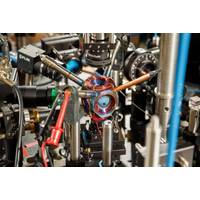
Shed the Satellite: Quantum Sensors hold Promise for Future GPS-Free Navigation
of the titanium package. They also work without a power source.To further keep out contaminants, Schwindt partnered with Sandia materials scientists to build the chamber out of titanium and sapphire. These materials are especially good at blocking out gasses like helium, which can squeeze through stainless steel and Pyrex glass. Funding was provided by Sandia’s Laboratory Directed Research and Development program.Construction took sophisticated fabrication techniques that Sandia has honed to bond advanced materials for nuclear weapons components. And like a nuclear weapon, the titanium chamber



 February 2024
February 2024





